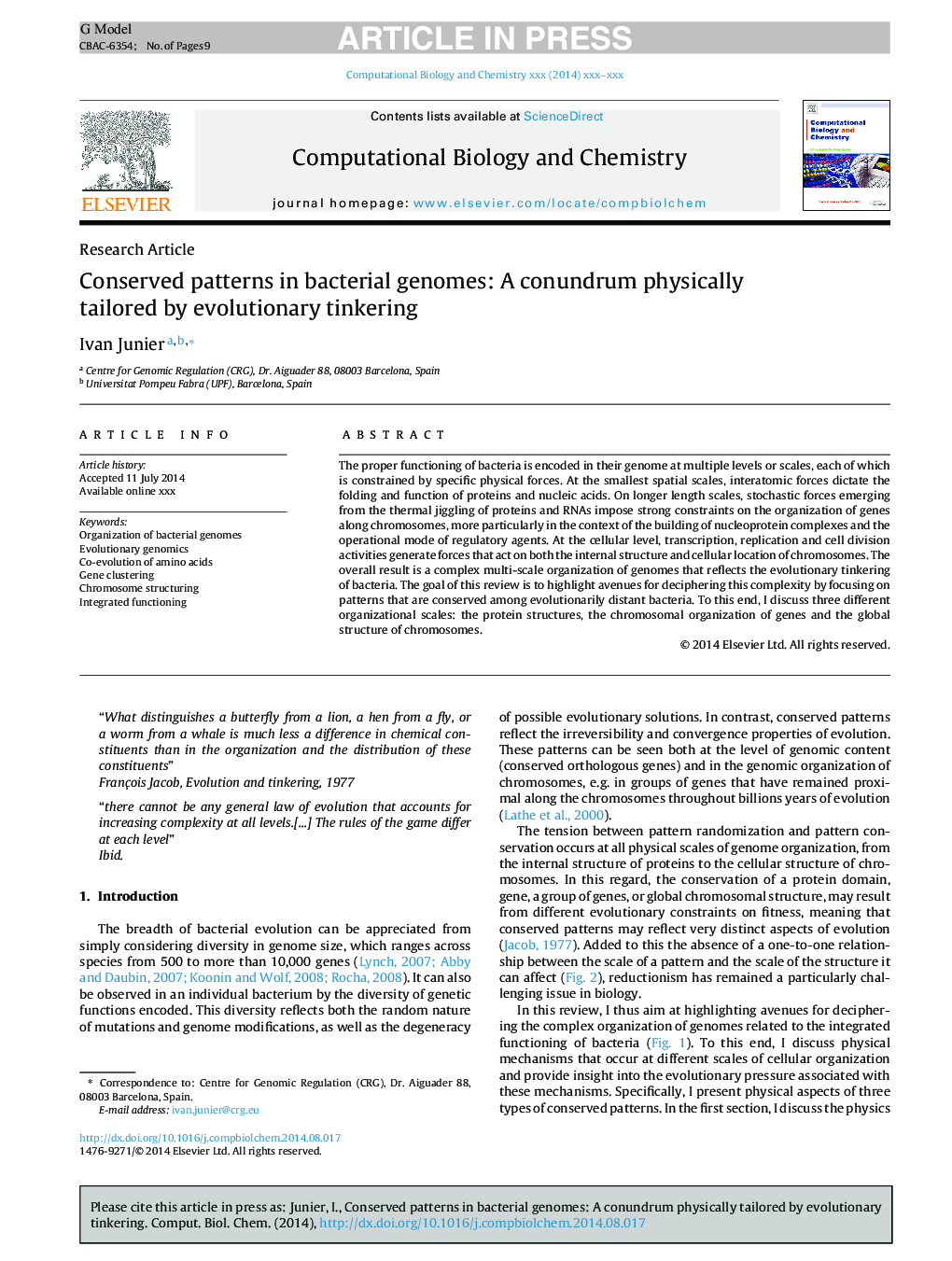| Article ID | Journal | Published Year | Pages | File Type |
|---|---|---|---|---|
| 10231881 | Computational Biology and Chemistry | 2014 | 9 Pages |
Abstract
The proper functioning of bacteria is encoded in their genome at multiple levels or scales, each of which is constrained by specific physical forces. At the smallest spatial scales, interatomic forces dictate the folding and function of proteins and nucleic acids. On longer length scales, stochastic forces emerging from the thermal jiggling of proteins and RNAs impose strong constraints on the organization of genes along chromosomes, more particularly in the context of the building of nucleoprotein complexes and the operational mode of regulatory agents. At the cellular level, transcription, replication and cell division activities generate forces that act on both the internal structure and cellular location of chromosomes. The overall result is a complex multi-scale organization of genomes that reflects the evolutionary tinkering of bacteria. The goal of this review is to highlight avenues for deciphering this complexity by focusing on patterns that are conserved among evolutionarily distant bacteria. To this end, I discuss three different organizational scales: the protein structures, the chromosomal organization of genes and the global structure of chromosomes.
Keywords
Related Topics
Physical Sciences and Engineering
Chemical Engineering
Bioengineering
Authors
Ivan Junier,
